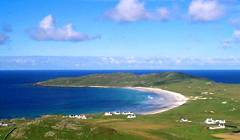Summary
 Background
Background
The development of habitat networks is seen as an important mechanism for reversing the effects of fragmentation on biodiversity while delivering a range of other environmental benefits such as creating more opportunities for public access and recreational enjoyment of the countryside. In the Scottish lowlands, there is a desire to develop a more integrated approach to planning land-use change and incentives which takes account of conservation objectives for the full suite of habitats and species associated with different types of land use.
Review of approaches
In 2004/05, Forest Research reviewed approaches to developing lowland habitat networks.
A review of approaches to developing Lowland Habitat Networks in Scotland (PDF-3016K)
The review recommended testing the usefulness of the focal species method used within Forest Research's suite of tools called BEETLE (Biological and Environmental Tools for Landscape Ecology) for evaluating the consequences of land use change for biodiversity and informing the development and targeting of agri-environment incentives.
Using focal species approach to modelling
Study areas
Planning for Lowland Habitat Networks in Scotland: a landscape-scale approach (PDF-1629K)
Synopsis of the full report (below).
Developing Lowland Habitat Networks in Scotland (PDF-3207K)
Full report.
This approach to modelling was tested in four case study areas (see map) in lowland Scotland with contrasting patterns of land use and conservation objectives:
- Isle of Tiree (pictured above)
- East Fife
- Strathspey
- Irvine catchment in Ayrshire.
Further application of this methodology has now been used to develop Integrated Habitat Networks for Glasgow and the Clyde Valley and for Falkirk Unitary Authority.
